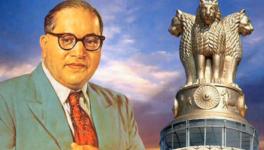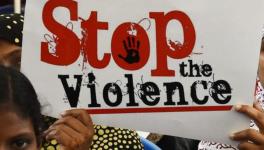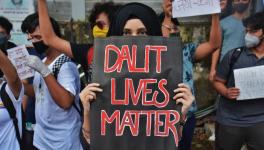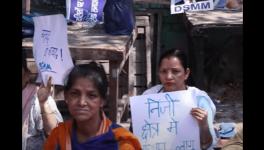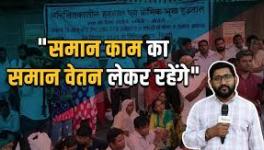Freedom of Religion in India
Image for representational use only.
India is a plural country with many religions. While the majority religion is Hinduism, Islam and Christianity are the primary religious minorities. The freedom movement accorded all religions equal status, but the communal forces regard some religions as “alien”.
Lately, there have been many attempts to co-opt those who profess other religions within the umbrella of Hinduism. The statements of communal forces are not uniform on this. MS Golwalkar, the second sarsanghchalak or head of the Rashtriya Swayamsevak Sangh, represented minorities as an “internal threat” to his notion of a Hindu country. Later Hindutva ideologues tried to give a geographical twist to the term Hindu. They labelled all those live in “Hindustan” as Hindus. The former human resources development minister and top BJP leader Murli Manohar Joshi used the term “Ahmadiyya Hindus” for Muslims and “Christi Hindus” for Christians. The current RSS chief, Mohan Bhagwat, has resorted to wordplay too, to make roughly the same point that all those living in Hindustan are Hindus.
Even so, these attempts are mere face-savers. At the ground level the Muslims and Christians in particular are firmly regarded by the Hindutva ideologues as members of an alien religion. A lot of hate has been built up against them, primarily by spreading misconceptions about them and selectively highlighting incidents to show their entire communities in poor light.
The Constitution, which was the outcome of the freedom movement, laid the foundation of the Indian republic. This document is a protector of democratic values, and Articles 25 to 28 list provisions that ensure freedom of religion. India accords everybody the right to practice, propagate and preach their religion. Those who have faith in god and those who are agnosts or atheists have the same rights and are free to live by their own values. Freedom of religion is basic to these articles of the Constitution, but in the last few decades in general and recent years in particular, the degree of religious freedom in India has declined.
For instance, nine states have introduced so-called “anti-conversion” laws, the latest being Haryana, in which, according to the Census 2011, there are 87.46% Hindus, 7% Muslims and 4.91% Sikhs, making the Hindus a majority by a very wide margin. The massive violence such as the carnages in Mumbai, Gujarat and Muzaffarnagar are very fresh in our memory and they were fomented along religious lines. The brutal murder of pastor Graham Stains, the Kandhamal violence, all these are direct attacks on religious figures and they form a part of our painful memory today.
We recently saw Delhi violence, which killed nearly 52 citizens. Over two-thirds of those killed were Muslims. The occasional and scattered anti-Christian violence has been continuous in India. While there are a few organisations and individuals who keep monitoring these incidents, there are many bodies at the global level who also chronicle these changes regularly. The Center for Study of Society and Secularism, Mumbai, analyses religious freedom and practice in India. Other organisations, such as the Alliance Defending Freedom, also bring violations of freedom of religion to our attention. Of course, many more individuals and groups are doing such work, though they may not be well known.
What has entered the public domain in recent times is the American State Department’s report on human rights in India. To be clear, many United States-based organisations also release such reports, but they are not binding on the policies of the state. Some American presidents have talked about promoting human rights globally—but ineffectively so. By and large, American foreign policy is not guided by considerations of human rights. In some very glaring cases they do take action, such as deny a visa, but these are exceptions. Besides, the United States itself indulges in various rights violations, the Abu Ghraib prison tortures and the Guantanamo Bay abuses being the most glaring evidences.
As a result, there are very big differences of opinion on how to assess these reports and the role of monitoring groups. What these reports achieve is that they hold a mirror to the countries they are concerned with. Their reports help and guide the human rights defenders and give direction to their work.
The office of International Religious Freedom, United States Department of State, in its 2019 report released on 10 June, highlights the violation of freedom of religion. It is filled with comprehensive and systematic reporting on Indian minorities and has an in-depth analysis of the challenges faced by minorities, especially Muslims, Christians and Dalits, in India. The highlight is the attention it has paid to religiously-motivated killings, assaults, discrimination and vandalism. It also refers to Indian Ministry of Home Affairs data, which records 7,484 incidents of communal violence during 2008-17, in which more than 1,100 people were killed.
The report cites instances of the horrific lynching of Muslims, Christians and Dalits. “While the lynchings are atrocious in and of themselves, what should alarm and galvanize the international community to action is the continuing incendiary rhetoric that is now part of mainstream discourse,” Syed Afzal Ali, Vice President of IAMC or the Indian-American Muslim Council, said last week in response to the release of this report.
Other noted organisations are monitoring events, to inform the world about the condition of Christians in India. “Since the current ruling party took power in 2014, incidents against Christians have increased, and Hindu radicals often attack Christians with little to no consequences,” the organisation notes as it lists the numerous incidents of crimes against the religious minority and describes their nature.
A United States State Department team had wanted to visit India for understanding the issue in depth, but it was denied a visa on the grounds that India is not guided by external observations. This is a tough call to make in a globalising world, a transition to which successive Indian governments have firmly embraced, as a state policy, despite opposition to it. The question is, can we hide our dirty linen under the carpet and for how long?
After all, it is not as if no Indian institution is aware of the reality. In fact, the Indian Supreme Court has condemned mob violence in an order in July 2018 and asked for states to frame laws to punish and prevent the menace, which a few states have complied with. The point is that if we have nothing to hide, we should welcome all the efforts of any organisation and learn from their experiences and suggestions.
Finally, the violation of freedom of religion is against the Constitution, which makes it the duty of the state to protect this freedom. The problem is that with communalism on the rise, those out to torment religious minorities and violate the freedom of religion of others enjoy great deal of impunity. India needs a humane society which does not just tolerate but celebrates diversity, which was the core strength of our freedom movement.
The author is a social activist and commentator. The views are personal
Get the latest reports & analysis with people's perspective on Protests, movements & deep analytical videos, discussions of the current affairs in your Telegram app. Subscribe to NewsClick's Telegram channel & get Real-Time updates on stories, as they get published on our website.












